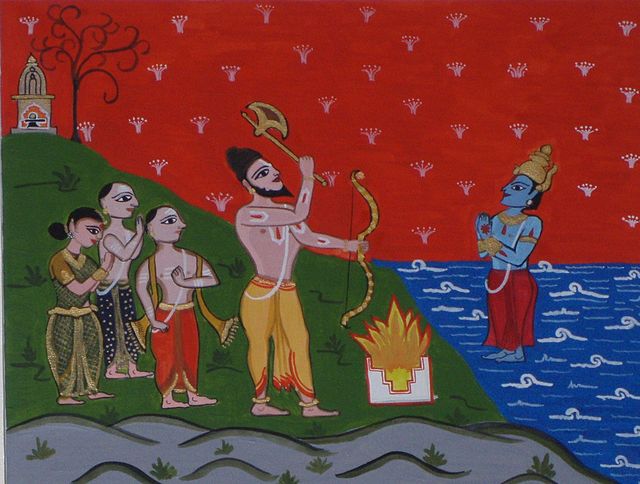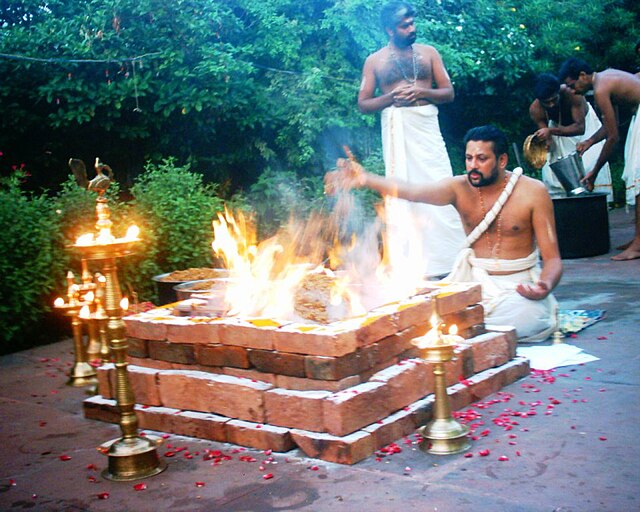The Nair also known as Nayar, are a group of Indian Hindu castes, described by anthropologist Kathleen Gough as "not a unitary group but a named category of castes". The Nair include several castes and many subdivisions, not all of whom historically bore the name 'Nair'. These people lived, and continue to live, in the area which is now the Indian state of Kerala. Their internal caste behaviours and systems are markedly different between the people in the northern and southern sections of the area, although there is not very much reliable information on those inhabiting the north.
A Nair by Thomas Daniell. Drawn in pencil and watercolor sometime between the 17th and 18th century.
Nair soldiers attending the King of Cochin: A 16th century European portrait. The majority of Nair men were trained in arms, and the traditional role of the Nairs was to fight in the continuous wars which characterized Kerala history.
Members of the Travancore Nair Brigade, drawn in 1855. The Nair brigade was the remnant of the Travancore Nair army after the takeover of the British.
There Comes Papa (1893) by Raja Ravi Varma depicts a Nair woman in the traditional mundum neryathum. The painting has also been noted by several critics due its symbolism of the decline of Nair matrilinity.
The Nambudiri, also transliterated as Nampoothiri, Nambūdiri, Namboodiri, Namboothiri and Nampūtiri, are a Malayali Brahmin caste, native to what is now the state of Kerala, India, where they constituted part of the traditional feudal elite. Headed by the Azhvanchery Thamprakkal Samrāṭ, the Nambudiris were the highest ranking caste in Kerala. They owned a large portion of the land in the region of Malabar, and together with the Nair monarchs, the Nambudiris formed the landed aristocracy known as the Jenmimar, until the Kerala Land Reforms starting in 1957. Naturalized Tulu Brahmins who took up Nambudiri customary ways are known as Embranthiri Brahmins.
A traditional Nambudiri mana
1883 sketch depicting a Nambūdiri man with the traditional pūrvaśikhā, or forelock
The Nambudiri associate their immigration to Kerala with the legendary creation of the region by Parashurama.
Nambūdiri Brahmin performing śrauta rites








